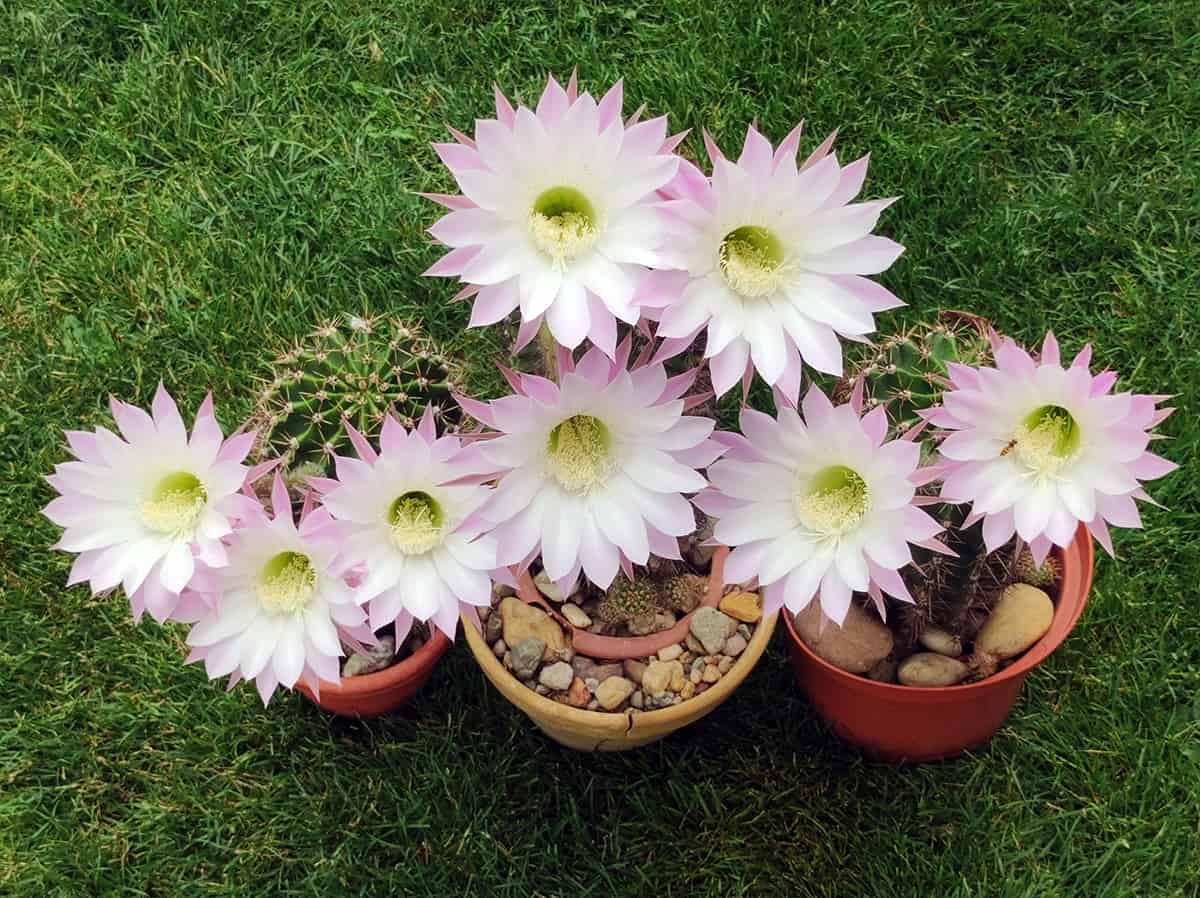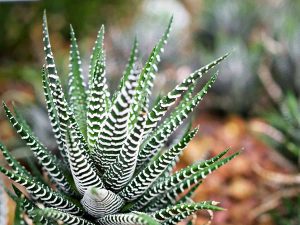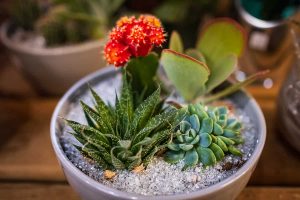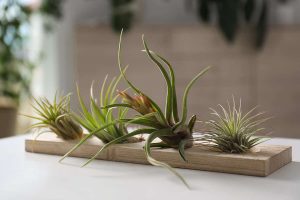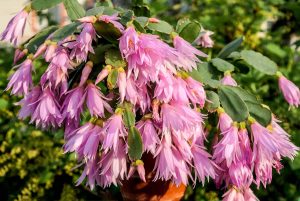Easter Lily Cactus is a captivating plant that enlivens your garden with its stunning blooms. It demands attention with its spherical shape and bright, fragrant flowers. Growing this cactus can be a rewarding experience, provided you understand its care requirements.
Your Easter Lily Cactus thrives in conditions that mimic its native South American habitat. It requires bright light and a well-draining potting mix. During hot afternoons, you should offer it some shade, especially when grown outdoors.
Watering needs for your cactus increase slightly due to its faster growth rate. However, you should reduce watering in the winter months to prevent root rot. With proper care, this plant will surprise you with repeated blooming cycles throughout the summer.
Table of Contents
Light
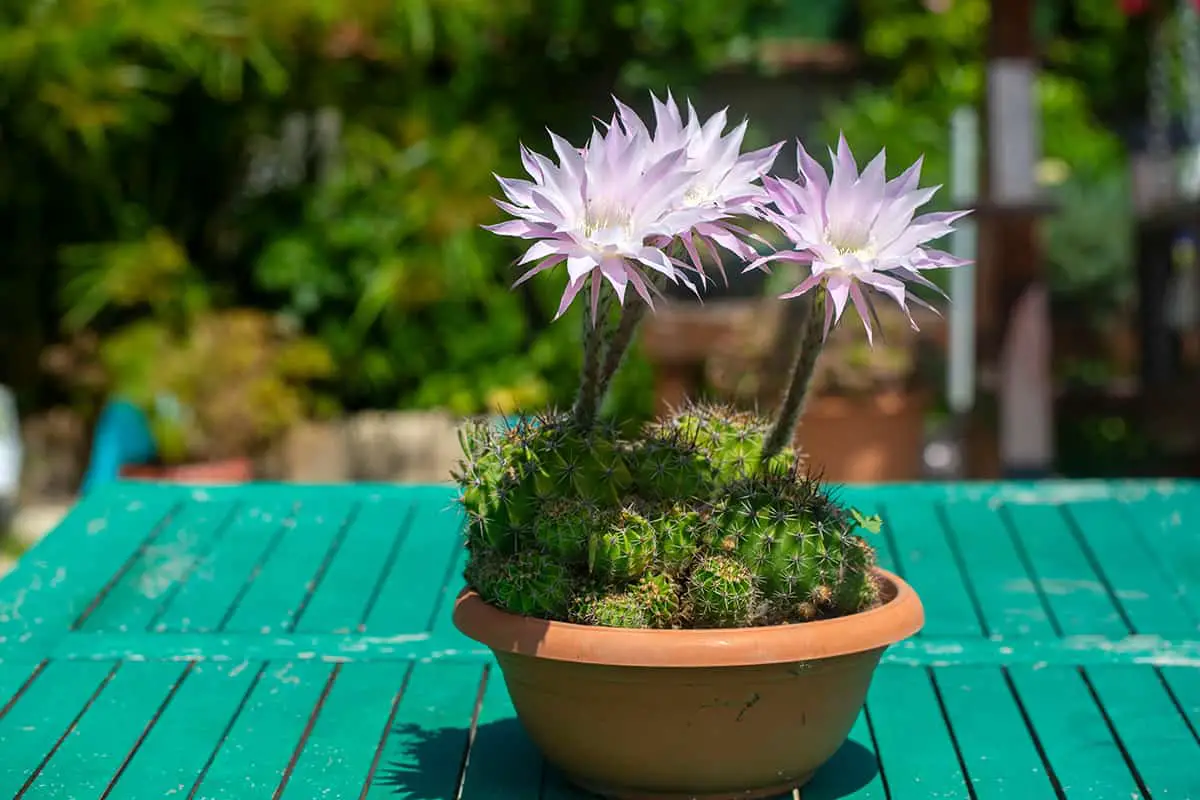
Your Easter Lily Cactus thrives in bright light. It needs this light to grow well. However, it’s important to protect it from harsh afternoon sun, especially if you have it outdoors. A spot that receives morning sunlight and shade in the afternoon is ideal. This balance prevents sunburn and ensures healthy growth.
Indoors, aim for a place where your cactus gets plenty of indirect light. It can be near a sunny window with a sheer curtain. This setup filters the intensity of direct sunlight. Remember, too much exposure can harm the cactus. It might appear bleached or discolored if the light is too strong.
If you notice poor blooming or a lack of growth, assess the light conditions. Your Easter Lily Cactus may need a little more light. Adjust its position gradually, watching for changes. A healthy cactus will show vibrant green color and steady growth.
Soil

For your Easter Lily Cactus to thrive, it requires well-draining soil. A succulent mix is best, as it prevents root rot which can be fatal for the plant. During the winter, reduce watering to avoid moisture build-up in the soil which can damage the roots.
In pots, ensure proper drainage by selecting a container with adequate holes. This allows excess water to escape, keeping the roots healthy. If growing outdoors, choose a location where rainwater does not collect, providing a drier environment for your Echinopsis oxygona.
To further enhance drainage, consider adding perlite or coarse sand to your soil mix. This creates air pockets, ensuring roots get enough oxygen and preventing waterlogging. Remember to adjust your watering habits according to the soil’s dryness.
Water
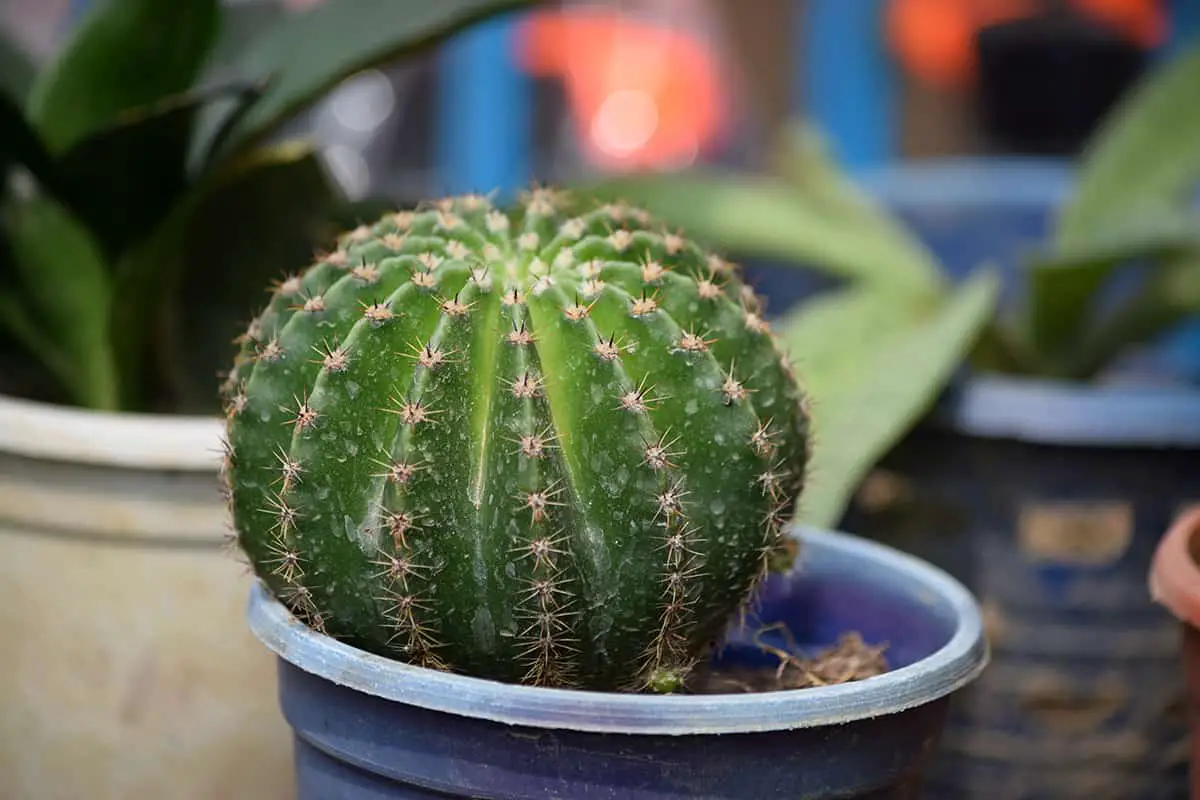
The Easter Lily Cactus needs consistent hydration. It grows faster than typical cacti, which means you will water it more often. In bright light, its thirst increases, yet it prefers some shade from intense afternoon sun when outside.
You need well-draining soil. Use a succulent mix to prevent root rot, especially crucial for potted plants. During winter, reduce watering as the plant’s growth slows down. After watering, ensure excess water drains out. This helps maintain a healthy root system.
Here is a quick guide on how to water your Easter Lily Cactus properly:
- Bright Light Environments: Water more frequently.
- Outdoor Growth: Protect from the hot afternoon sun, potentially reducing water need due to lower temperature exposure.
- Well-Draining Soil: Essential to prevent root rot.
- Reduce in Winter: Cut back on watering as growth diminishes.
Remember, always check the soil before watering. If it feels dry at a depth of one inch, it’s time to water.
Temperature and Humidity
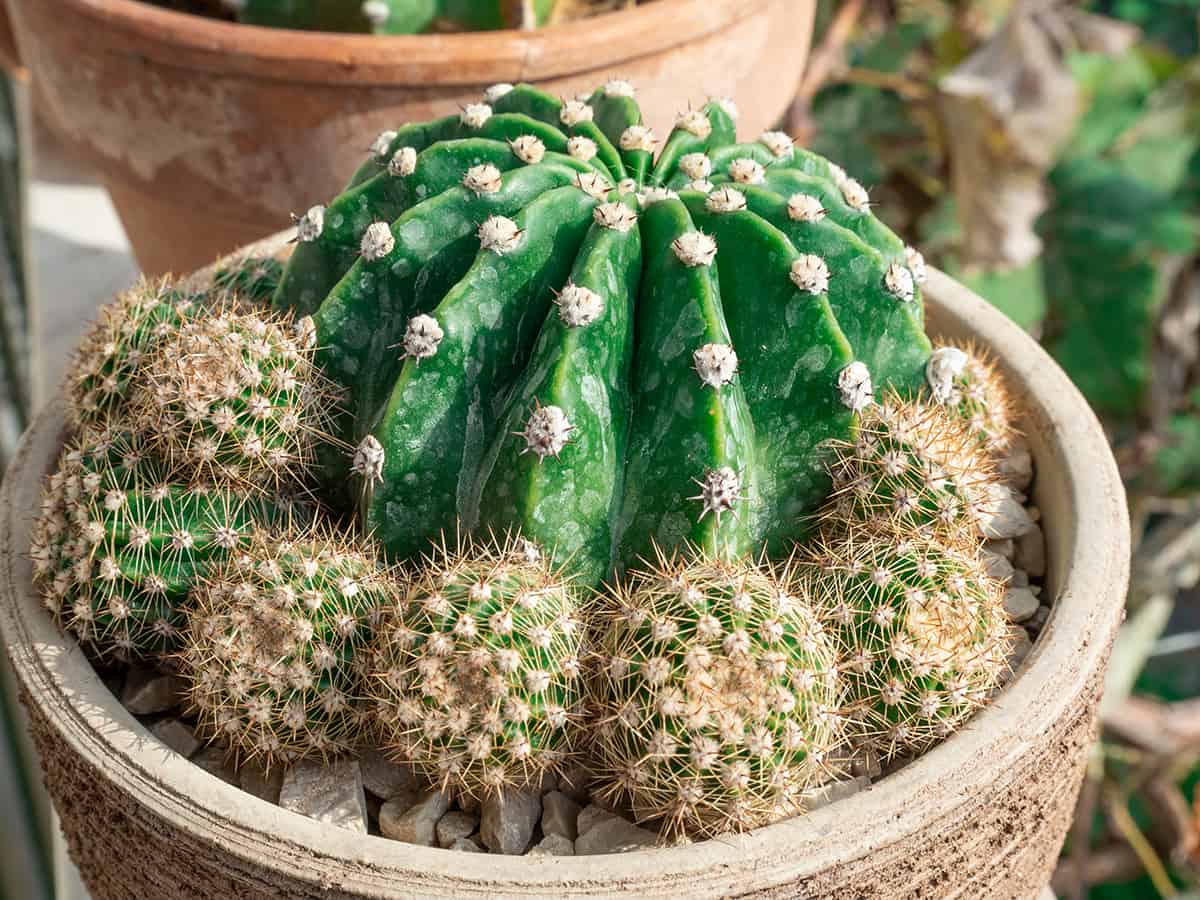
Easter Lily Cactus thrives in stable temperatures. You should keep your cactus in conditions that mimic its native habitat. During the day, aiming for temperatures between 70°F and 80°F provides an optimal environment. At night, the temperature should be slightly cooler, ideally between 60°F and 68°F. Maintaining this temperature range encourages healthy growth.
For humidity, Easter Lily Cactus requires a lower level. Your home environment is usually suitable with average indoor humidity. To prevent moisture-related issues, ensure the spot you choose has good air circulation. If your cactus is outdoors, make sure it’s not in an overly humid area as this could harm the plant.
In winter, the temperature should be cool but not freezing. Aim for above 50°F to keep your cactus from cold damage. Don’t allow the temperature to swing rapidly, as this can stress the plant. Consistency is key when caring for your Easter Lily Cactus.
Remember to avoid placing your cactus near heating vents or air conditioners. These can create dry or cold spots that may impact the plant’s health.
Fertilizer
To keep your Easter Lily Cactus thriving, understanding fertilizer needs is crucial. This plant benefits from regular feeding.
During the growing season, which is spring and summer, fertilize your cactus monthly. Opt for a balanced, water-soluble fertilizer, ideally one formulated for cacti and succulents. The dilute solution should have equal parts of nitrogen, phosphorus, and potassium.
Start with a half-strength mixture to avoid overwhelming the plant. Apply the solution to moist soil to prevent root burn. Ensure you do not fertilize in fall and winter. During these cooler months, your cactus is dormant and could be harmed by excess nutrients.
For outdoor plants, a slow-release granular fertilizer can be used. This type is sprinkled on the soil surface and slowly releases nutrients. It lessens the need for frequent application, making maintenance simpler.
Remember, too much feeding can damage your Easter Lily Cactus. Over-fertilization can lead to salt build-up in the soil which can cause root damage and stunted growth. Stick to the recommended dosage and frequency to provide your plant with the right nutrition.
Propagation
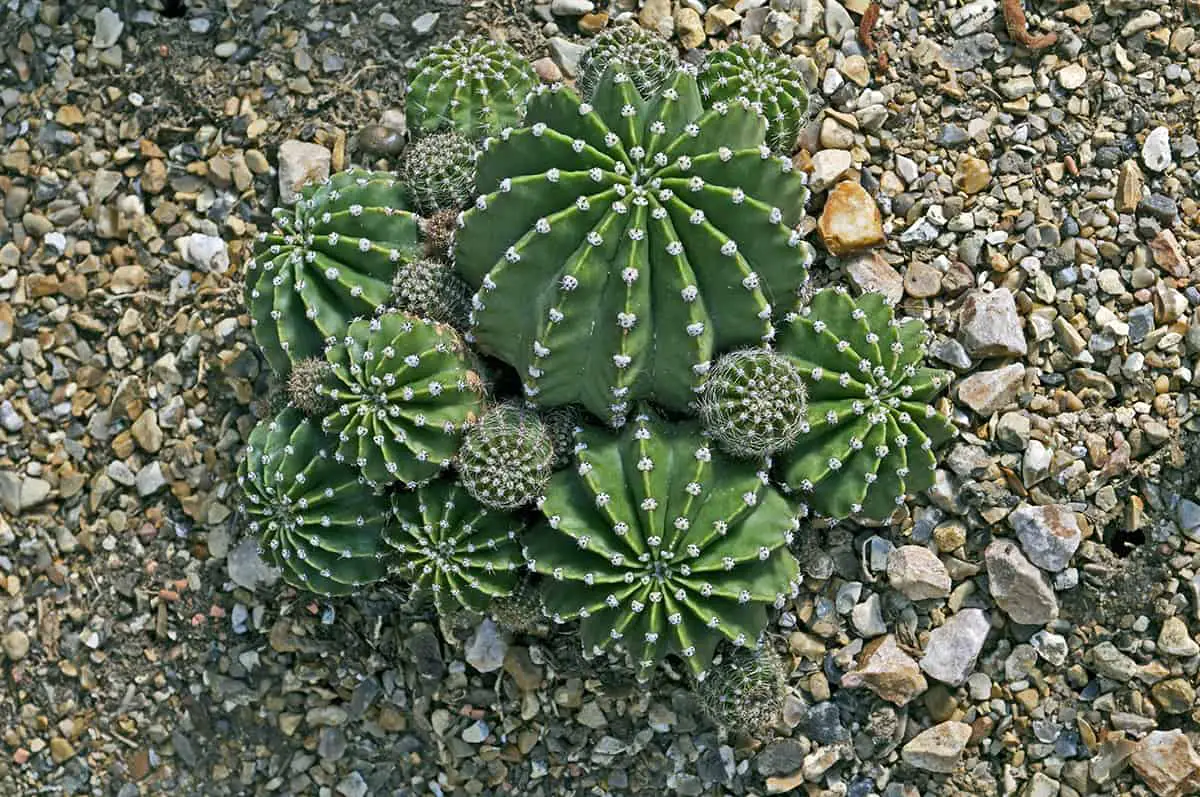
Easter Lily Cactus propagation is straightforward. You can propagate from seeds or cuttings. When using cuttings, select small globes or plantlets from the parent plant.
Clean and dry the cuttings before planting. A dry surface helps prevent rot. Once dry, plant them in well-draining soil. Ensure the soil is not overly moist.
Patience is critical with seeds. They take longer to grow than cuttings. Plant the seeds in a sandy mix. Keep them warm and slightly moist.
Success hinges on providing the right conditions. Your cacti need warmth, light, and ventilation. Avoid overwatering to prevent rot, which is common in damp conditions.
Pruning
When you grow an Easter Lily Cactus, pruning is important. It’s a method to shape your plant and encourage healthy growth. You cut back on the stem segments to achieve the desired form. To do this, twist or snip the stem at the natural joints.
Your Easter Lily Cactus can also get pruned to control its size. You may remove up to a third of the plant annually. If you need to prune more, do so carefully. Cutting too much might lead to a plant that looks unkempt.
It’s best to prune your cactus after blooming. This gives it time to recover and bloom again. Make sure your tools are clean to prevent spreading diseases. A sharp knife or a pair of pruners does the job well.
Potting and Repotting
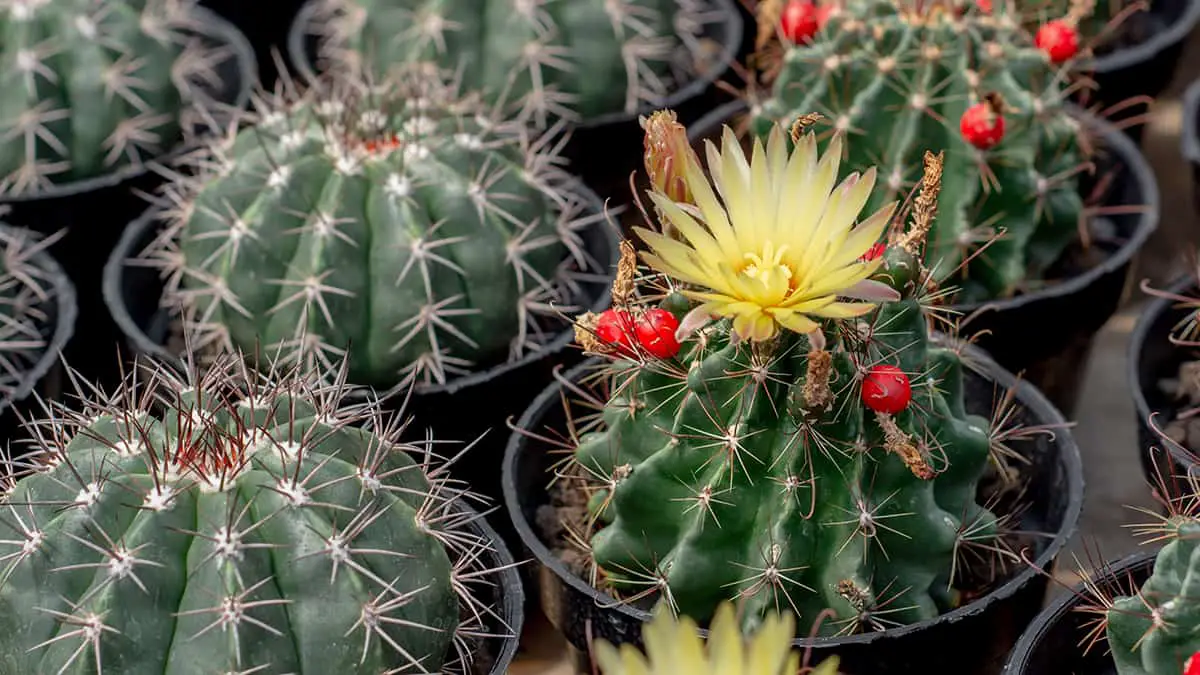
When you begin with an Easter Lily Cactus, select a pot with excellent drainage. This prevents water from stagnating and causing root rot. A well-draining succulent mix is essential. When choosing the size, a pot that snugly fits the cactus’s root ball works best.
Repotting your Easter Lily Cactus is necessary as it grows. Typically, you should repot every two to three years. Find a new container slightly larger than the current one. This incremental increase encourages healthy growth without overwhelming the plant. Remember, an overly large pot can retain excess moisture and be detrimental.
After repotting, water your cactus sparingly, allowing it to adjust to its new environment. This limited watering helps the roots recover and prevent potential damage. Repot the cactus in the spring, allowing it to benefit from the growing season’s conditions.
Common Problems & Troubleshooting
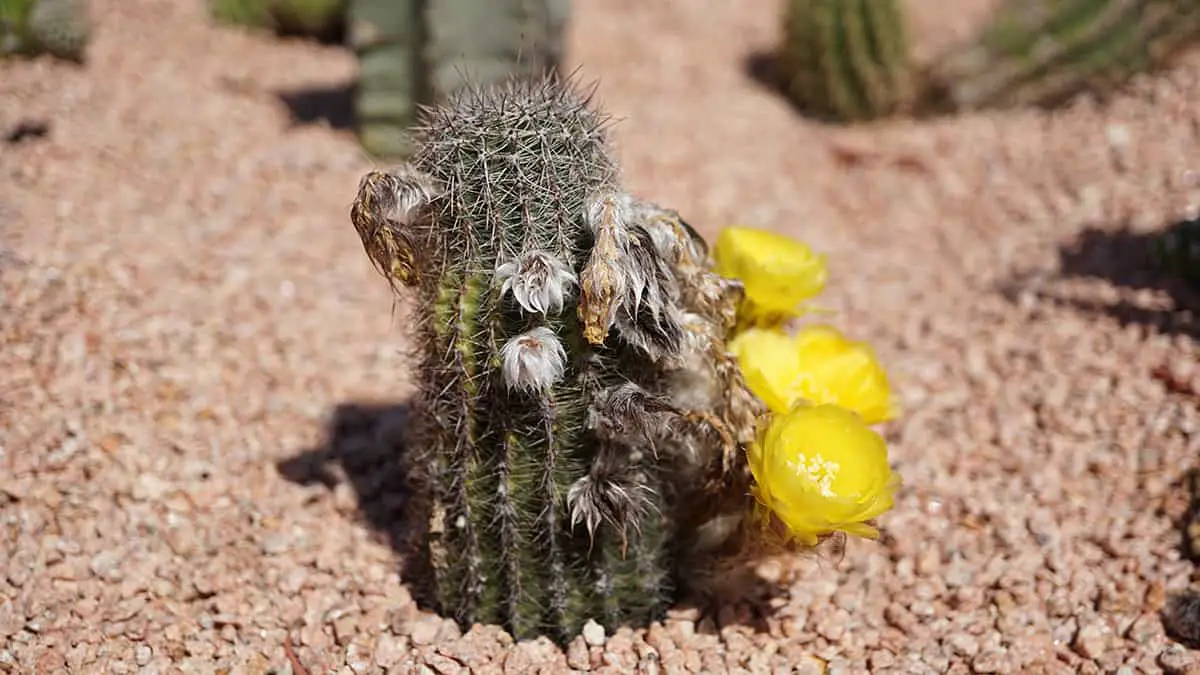
When you grow Easter Lily Cactus, you may encounter a few common issues.
If you find your cactus has stunted growth, it could be due to insufficient light. Make sure to place your cactus in a location where it receives plenty of indirect sunlight.
Overwatering is another typical problem. This cactus prefers a dry environment, so water sparingly and ensure the potting mix is well-draining.
Pests such as mealybugs and spider mites can attack Easter Lily Cactus. You’ll see white cotton-like substances or tiny webs if pests are present. To treat these, gently wipe the affected areas with a solution of mild soap and water. Repotting the cactus in fresh soil helps as well.
Sometimes, Easter Lily Cactus encounters blooming issues. If your cactus does not flower, it may need more sunlight or a period of cooler temperatures during winter to promote blooming. Ensure it experiences a rest period with reduced watering and cooler temperatures to set buds.
For scheduling issues, such as when flowers do not open or last as expected, timing is vital. Flowers typically bloom in the evening and close by midday. The environment contributes heavily to this schedule. Try adjusting your care routine slightly if blooms persist for shorter periods than you desire. Remember, patience is key with the Easter Lily Cactus. With attention and care, your cactus will thrive.
Easter Lily Cactus Varieties
The Easter Lily Cactus encompasses a range of varieties known for their striking flowers and spherical growth form. These types vary in rib counts, spine structure, and flower color.
Echinopsis Oxygona
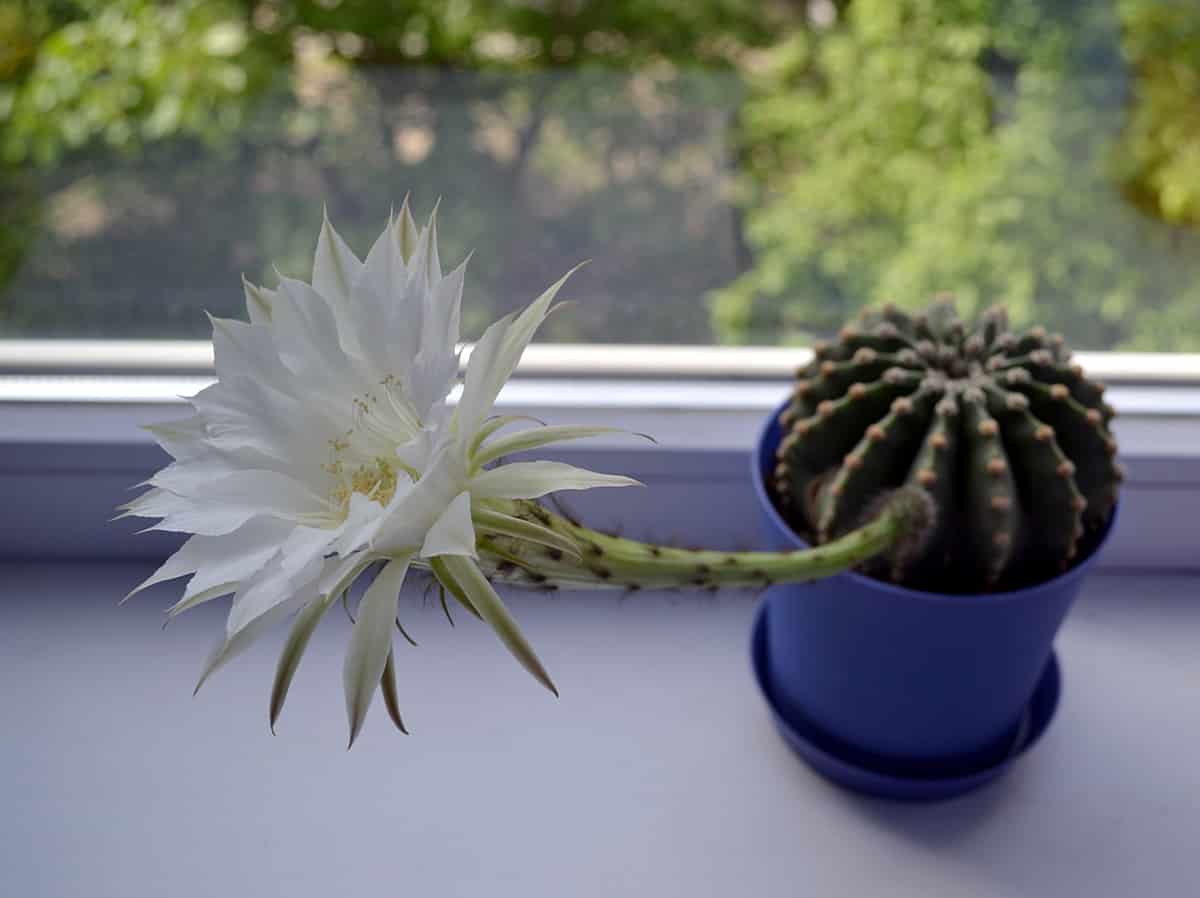
You’ll find the Echinopsis Oxygona, native to Brazil and Argentina, showing off large white or pink flowers. They produce blooms on woolly stems that open in the evening and close by midday. Full sun to partial shade suits this variety well, ensuring vibrant blossoms.
Echinopsis Multiplex
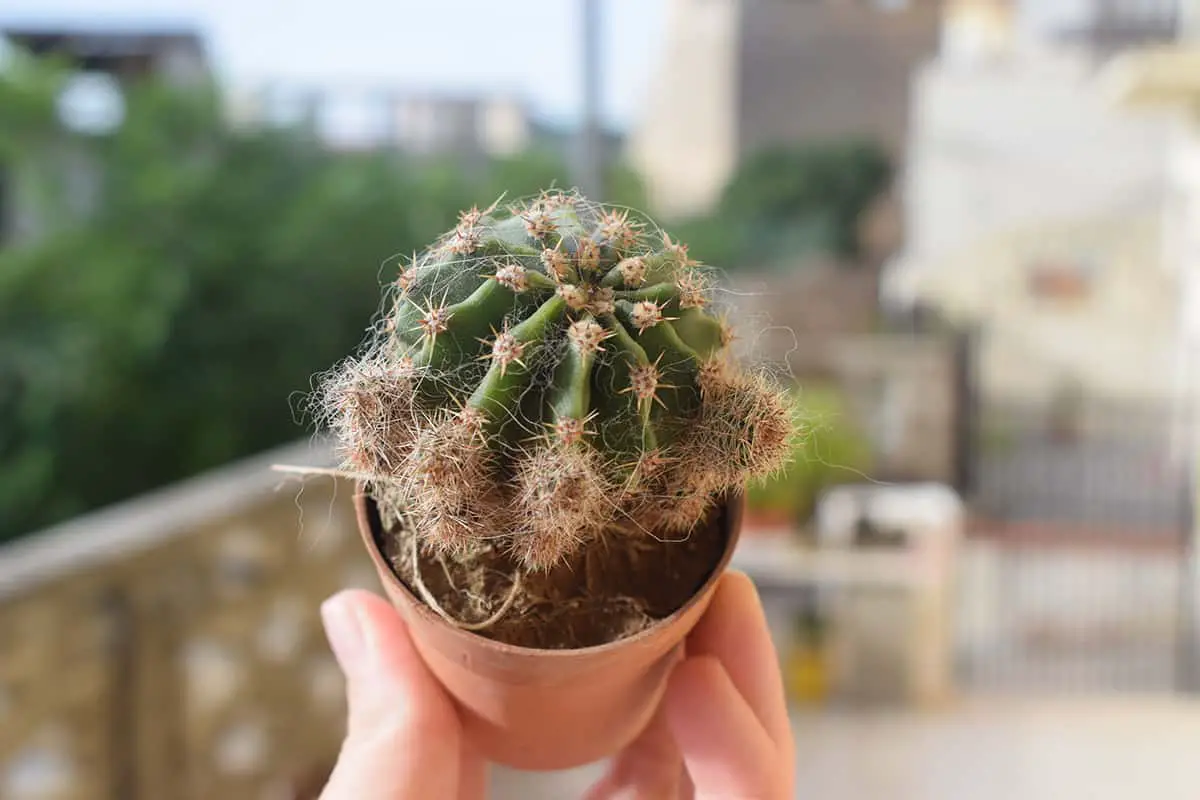
The Echinopsis Multiplex, also called the Night-blooming Cereus, is cherished for its big, fragrant flowers. They prefer well-draining soil and moderate water. When in bloom, their magnificent flowers add a dramatic flair to your garden.
Echinopsis Eyriesii
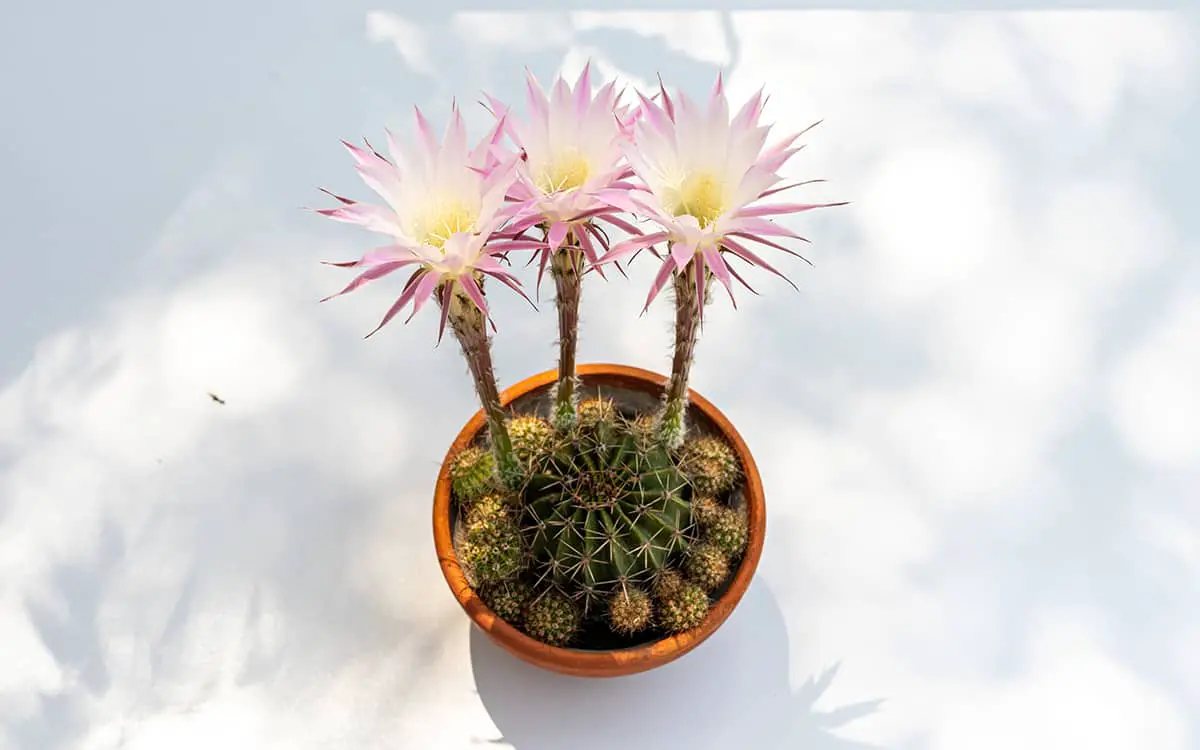
Echinopsis Eyriesii is known for its pale pink to white flowers. This variety enjoys a sunny location and dry conditions between waterings. Its blooms are a stunning sight, emerging from a ball-shaped cacti body.
Echinopsis Calochlora
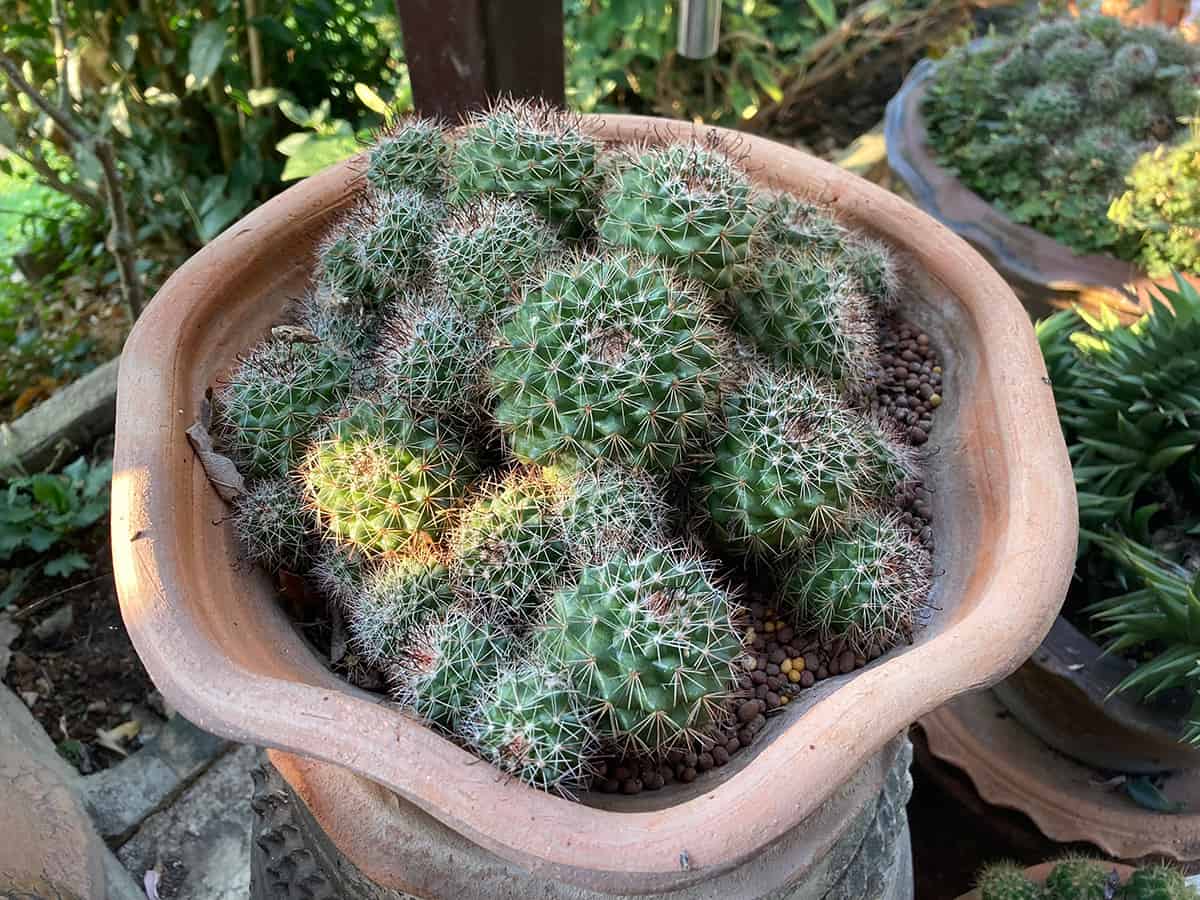
The Echinopsis Calochlora boasts long green stems topped with white blooms. It is a cactus that demands minimal care, thriving in environments with good light and infrequent watering.
Echinopsis Tubiflora
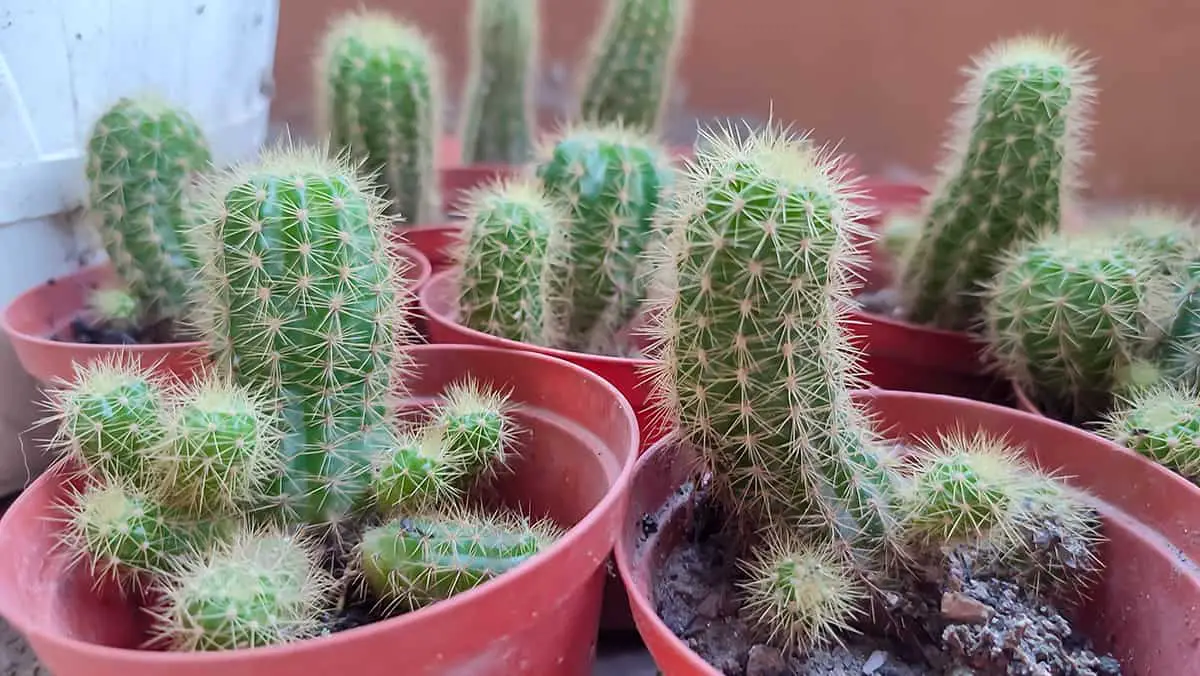
Your collection can shine with the Echinopsis Tubiflora, which produces long tubular flowers. They’re adaptable but perform best in good light and when not overwatered. This variety’s blooms are particularly aromatic, filling the evening air with a pleasant scent.
